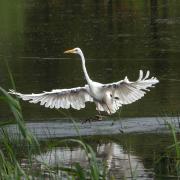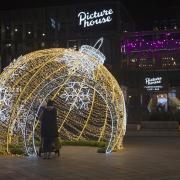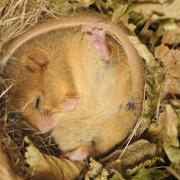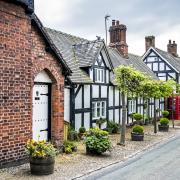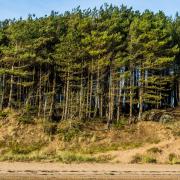A hay meadow in full bloom is surely one of the most breathtaking sights in the great British countryside. Resplendent expanses of flowers and grasses waving gently in the summer breeze, supporting an entire ecosystem of insects, birds and mammals, they are quite literally buzzing with life. Meadows were once so ubiquitous, especially in a dairy region such as Cheshire, as to be unremarkable. However, farming methods have changed over time and this majestic sight is becoming increasingly rare across the county. Past generations of Cheshire folk will have been well acquainted with bird’s foot trefoil, ragged robin, rough hawkbit and oxeye daisy, the common names for some of our more common flowers but this knowledge is fading.
Across the UK 97 per cent of our historic hay meadows have been lost. This number creeps up to 99 per cent in Cheshire since the 1930s The loss of meadows affects the wildlife that relies on them for food and habitat. The loss of these meadows and the knowledge associated with them also has a wider societal effect – it disconnects us from nature and our rural heritage.
In an attempt to reverse these historic losses, Cheshire Wildlife Trust has embarked on a landscape-scale meadow restoration project Pollinating Cheshire. Now in its seventh year, Pollinating Cheshire has seen almost 300 acres of meadow created across Cheshire, with a further 50 acres due to be created and enhanced this coming summer. As the scale of the project increases so too does the demand for wildflowers. In response, Cheshire Wildlife Trust has set up a nursery at its headquarters at Bickley Hall Farm near Malpas.
What started as a few hundred wildflowers being grown outside the back door of the farmhouse, tended by one member of staff during their tea break, has developed into a professional nursery complete with automated irrigation system, multiple polytunnels, full-time staff and a team of incredible volunteers. This new infrastructure leaves the nursery capable of growing tens of thousands of wildflowers, all in support of the trust’s habitat creation work. This increased capacity has also allowed the Cheshire Wildlife Trust nursery to branch out and begin growing trees, the first crop of which will be ready for planting across Cheshire this winter.

The trust is now less reliant on other nurseries and this increased self-sufficiency brings many advantages. There is a financial benefit to growing your own stock as it lowers the overall costs of habitat creation and frees up funds for other important work, but the economic assets are just a small part of the story.
The environmental and ecological advantages of running a conservation nursery are of great importance to an organisation such as Cheshire Wildlife Trust. Self-sufficiency lessens the trust’s reliance on the national supply chain, cutting the amount of carbon used in transporting plants up and down the country. Furthermore, collecting seed locally, from safe sites, reduces the risk of introducing pests or pathogens into Cheshire. Lessons must be learned from the devastating outbreaks of ash dieback and Dutch elm disease that continue to kill millions of trees nationwide.
Using seed of local provenance has other benefits. Locally sourced plants will preserve local genetics, enabling the trust to grow stock better suited to Cheshire’s climate and soils, increasing the resilience of its newly created woodlands and meadows. The trust can also grow stock for specific sites using seed from that very same site, taking the term ‘seeds of local provenance’ to a whole new level.

Habitat creation is but one facet of Cheshire Wildlife Trust’s work. As well as bringing wildlife back to the region, the trust hopes to inspire people to take action for nature. The nursery has been playing its part in this by hosting regular volunteer days, opening its doors to members of the public to come and muck in, get dirt under their fingernails and do something positive for nature in Cheshire. The nursery hosts school trips allowing young people to learn about the importance of meadows and woodlands in the wider landscape.
The nursery is evolving all the time. A new potting shed will also act as an outdoor classroom for visiting schools, and works are underway to improve the path network enabling those with mobility issues to take part. The growing season has now begun and staff and volunteers are working hard to nurture an incredible 50,000 wildflowers and 12,500 trees this year. If you would like to get involved with Cheshire Wildlife Trust’s nursery, or any of its other work, go to cheshirewildlifetrust.org.uk/volunteering-opportunities for more details.
INFORMATION
We’ve lost 99 per cent of Cheshire’s wildflower meadows since the 1930s. We need to raise £35,000 to help create and restore these special places. Donate today and be a meadow maker.
cheshirewildlifetrust.org.uk/meadows-appeal
By working with private landowners, local authorities, charities and estates Cheshire Wildlife Trust has worked on 145ha of meadows but we have an ambitious target to reach 300ha by 2030.
Find out more: cheshirewildlifetrust.org.uk/pollinating-cheshire






